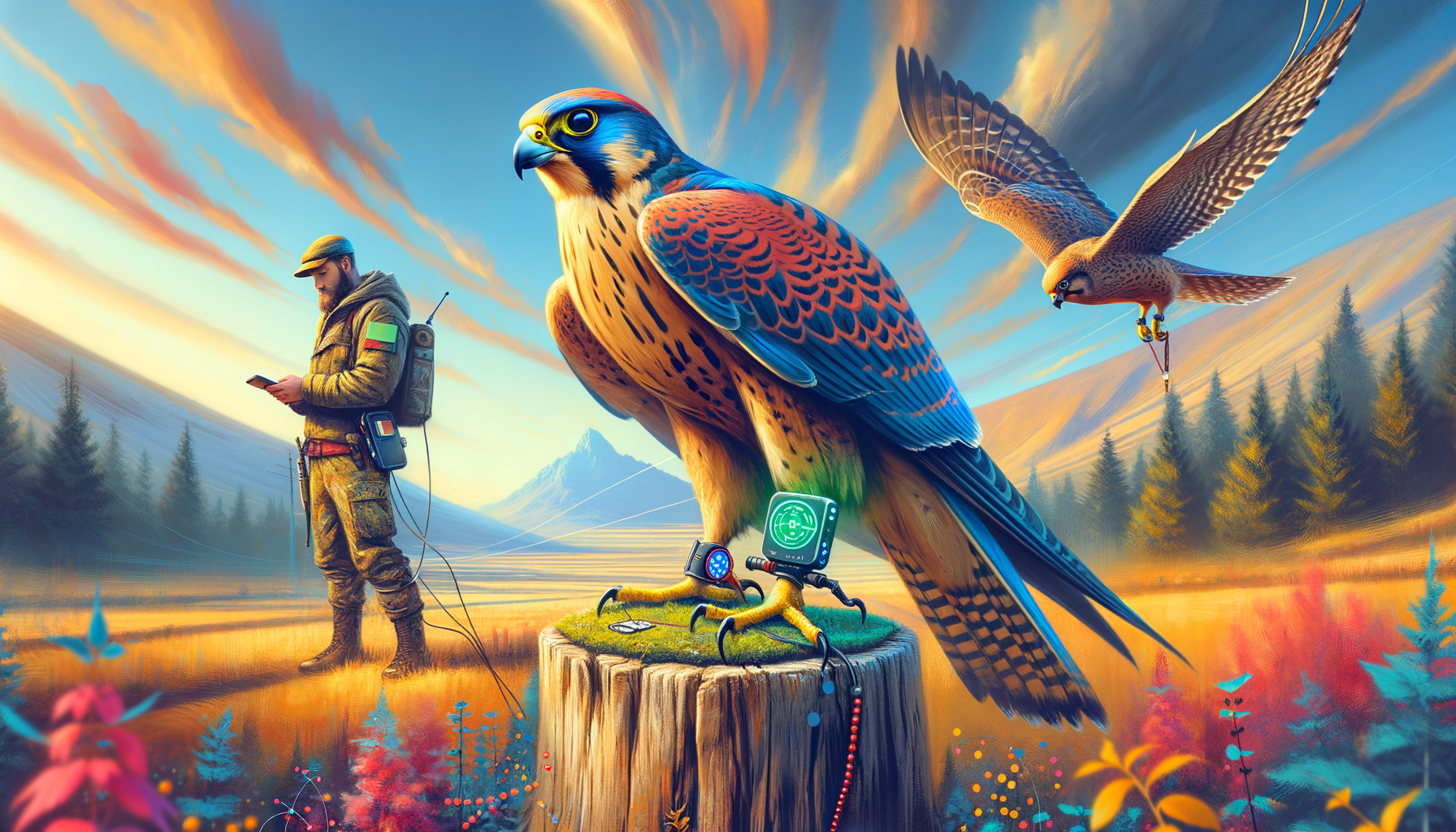Key Insights on Falconry Technology
- Advanced tracking devices help locate and monitor falcons during flights.
- GPS technology provides real-time data on the bird’s location and speed.
- Lightweight transmitters are attached to the falcon without affecting its flight.
- Radio telemetry involves the use of receivers and antennas to track the falcon’s movements.
- Advanced telemetry systems can have a range of up to 40 miles.
- Modern batteries in tracking devices last longer, reducing the need for frequent replacements.
- Solar-powered transmitters harness renewable energy, making them more eco-friendly.
- Monitoring technology helps improve training techniques and ensures the safety of the falcons.
- Recording flight data assists in understanding the health and performance of the birds.
- Remote monitoring allows falconers to observe their birds without being physically present.
Stay updated with the latest innovations in falconry technology to keep your birds safe and well-trained.
The Magic of Falconry Meets Modern Technology
Imagine you’re in the heart of Dublin, and suddenly, you come across an ancient Celtic blacksmith, hammering away at a piece of iron. His tools may be ancient, but his skill and the final product are boundlessly impressive. Now, picture that he gets his hands on some modern equipment’his craftsmanship doesn’t change, but his efficiency and precision skyrocket! That’s exactly what happens when the age-old practice of falconry meets cutting-edge technology.
Welcome to Learn Falconry, where tradition melds with innovation to create an incredible experience for falconry enthusiasts worldwide. Whether you’re a seasoned falconer or just a curious newcomer, our article will open your eyes to how modern advancements are transforming this ancient art.
So why should you keep reading? Because just like adding a dash of modern to the traditional blacksmith’s forge, integrating technology into falconry doesn’t just preserve its rich history’it enhances it. We’re talking smarter training methods, better bird health monitoring, and new ways to interact with these magnificent creatures. Stay with us as we journey through the captivating world of falconry, one technological leap at a time!
Embracing Technology in Falconry: Gadgets and Modern Innovations
Falconry, the ancient practice of hunting with birds of prey, has evolved incredibly over the years, thanks to modern technology. Today, many falconers are utilizing modern falconry tech to enhance their training and hunting experiences. This article will guide you through some of the most exciting falconry gadgets and technologies currently being used, making falconry more efficient and enjoyable for both the falconer and their bird.
The Role of Modern Falconry Tech
Advancements in technology have brought about significant changes in the way falconry is practiced. Devices like GPS trackers and telemetry systems are invaluable to modern falconers. GPS trackers, for example, allow falconers to keep real-time tabs on their birds, ensuring that they can always locate them, even if they soar far off during a hunt. You can learn more about GPS Trackers here, which have transformed the reliability and safety of modern falconry.
Telemetry systems have also improved, with options that provide more precise data on the bird’s location and movement. These gadgets use radio signals to transmit information about the bird’s position, which is crucial for tracking and retrieving birds after a flight.
Falconry Gadgets Enhancing Training
When it comes to training a falcon, modern falconry tech has introduced several tools that can make the process more effective. For example, digital record-keeping software allows falconers to track their bird’s progress, noting important developments and changes in behavior or health. This data can be invaluable when trying to understand patterns and make informed training decisions.
Another fascinating innovation is the use of drones in falconry. Drones can simulate prey, offering a controlled training environment for young or inexperienced falcons. They also provide excellent conditioning opportunities for the birds, improving their agility and hunting skills. If you’re interested in training techniques that incorporate these modern technologies, check out our guide on Training with Technology.
Health and Monitoring Technologies for Falcons
Technology is not just limited to tracking and training; health monitoring gadgets are also playing a big role in modern falconry. Wearable tech for falcons, such as lightweight sensors, can monitor vital signs, ensuring that the birds remain healthy and fit. This tech can alert falconers to any health issues early on, allowing for prompt treatment and care.
Furthermore, cameras and monitoring equipment provide insights into the bird’s behaviors and habits that may not be visible during regular interactions. These observations can help with understanding and improving training methods, ensuring the well-being of the falcon. Learn more about innovative health monitoring tools at Technology in Falcon Health Monitoring.
Connectivity and Community in Falconry
The digital age has also created new ways for falconers to connect and share their experiences. Online falconry communities, social media platforms, and blogs offer a wealth of information and support, making it easier than ever to learn from fellow enthusiasts and experts alike. These platforms allow for the exchange of tips, training techniques, and stories that enrich the falconry experience.
In addition, falconry apps and software provide useful information at the fingertips of every falconer. These applications can serve as comprehensive guides, providing everything from species-specific care tips to legal regulations. For a deeper dive into how these digital tools are making a difference, you can explore Falconry Apps and Software.
The Future of Falconry Technology
Technology in falconry continues to advance, promising even more exciting possibilities for the future. Innovations like virtual reality training, smart falconry equipment, and advanced telemetry techniques are already on the horizon, hinting at the potential for even more immersive and effective falconry experiences.
By embracing these modern tools, we can ensure that the timeless practice of falconry continues to thrive in a modern world. To stay updated on the latest advancements, keep an eye on our section dedicated to Falconry Technology.
Falconry’s rich heritage combined with modern innovations showcases how technology in falconry is enhancing both the practice and enjoyment of this ancient skill.
Falconry-Tech in 2024: Enhancing the Experience
GPS Tracking
Falconers rely heavily on GPS technology to monitor their birds, ensuring safety and improving training methods. This technology not only helps keep track of the raptor’s location but also records detailed flight data. Imagine being able to see exactly how fast your bird is flying or how high it ascends with every second! Below is an example table showing a GPS tracking log:
| Parameter | Value |
|---|---|
| Altitude | 300m |
| Speed | 45 km/h |
| Distance | 3 km |
| Duration | 10 mins |
Drone and RC Wing Training
Drones and RC (remote-controlled) wings are becoming a staple in falconry training. By simulating prey with these devices, falconers can hone their bird’s skills and build confidence. The drones move in ways that mimic living prey, making the training more realistic and engaging.
Fox Telemetry
Fox telemetry systems are also used in falconry for tracking and analyzing the movements of raptors. This tech not only helps monitor the birds but also provides valuable data to enhance their care. Fox telemetry can capture intricate movement patterns, allowing for more precise training and care routines.
Advanced Incubators and Brooders
Modern-day incubators and brooders have revolutionized how humans understand and interact with birds. These advanced systems ensure optimal conditions for hatching and growing young raptors, helping conservation efforts to protect these majestic birds.
Avian Medicine
Technology has also driven significant progress in avian medicine. Modern diagnostic tools and treatment methods offer better care and health management for raptors. For example, advanced imaging technologies like MRIs can now be used to diagnose medical conditions in birds.
Falconry Clubs and Associations
Falconry clubs and associations play a crucial role in the community. They provide platforms for sharing knowledge, ethical practices, and fostering a sense of community among falconers. Workshops and training sessions led by experts offer essential learning opportunities for both novice and seasoned falconers.
Bells and Bewits
Bells and bewits are vital accessories in falconry. Bells come in materials like nickel, silver, and bronze, making it easier to hear your bird from a distance. Bewits, available in various sizes and colors, are used to secure bells and transmitters to the bird.
Hoods
Falconry hoods come in various styles and sizes to fit different birds of prey. These hoods are essential in keeping the raptors calm, especially during transport or training.
Radio Telemetry
Radio telemetry involves using transmitters and receivers to track the birds. This technology is integral for monitoring the bird’s location and ensuring its safety, even when it’s out of sight.
Other Equipment
- Gloves and Gauntlets: Used for safely handling birds.
- Perches and Blocks: These are essential for training and providing rest places for the birds.
- Lures and Casting Jackets: These items are used in hunting to simulate prey.
- Healthcare Products: Designed to keep birds in peak health.
- Shipping Gear and Incubators: Essential for transporting and breeding raptors.
Accessories
- Tie Wraps and Snap Install Kits: Help secure various pieces of equipment.
- Leather Conditioners: Maintain the quality of leather gloves and equipment.
- Tracking and Monitoring Devices: Altimeters, GPS devices, and reward tags are used for various tracking tasks. Altimeters track the flight’s altitude, while GPS devices monitor location. Reward tags provide 24-hour support in case a bird goes missing.
Falconry equipment is continually evolving, driven by technological advancements. These tools are designed to be durable, adjustable, and reliable, ensuring they meet the needs of both the birds and their handlers.
Embracing Falconry Technology in 2024
In 2024, the world of falconry has been transformed by technology, making it more exciting and manageable. Let’s sum up some key advancements:
- GPS Tracking: Helps falconers keep their birds safe and optimize their training by analyzing every second in flight.
- Drones and RC Wings: These tools train birds to become skilled athletes, boosting their abilities and confidence.
- Fox Telemetry: Enhances raptor care by allowing detailed tracking and movement analysis.
- Advanced Equipment: Including state-of-the-art incubators and tools for better bird care and conservation.
- Avian Medicine: Technological advances in healthcare ensure raptors receive the best possible treatment.
Falconry equipment like bells, bewits, and hoods come in various styles and sizes to fit different needs, while leg bells, tail mounting plates, and radio telemetry systems help in tracking birds. Accessories like gloves, perches, health care products, and leather conditioners maintain raptor health and care.
Final Takeaway
The integration of modern technology into falconry not only improves the sport but also ensures the well-being and training of raptors. These advancements are fostering a community that values ethical practices, sustainability, and conservation. Embracing these technologies allows falconers to elevate their craft, pledging a rich and brighter future for the art of falconry.



